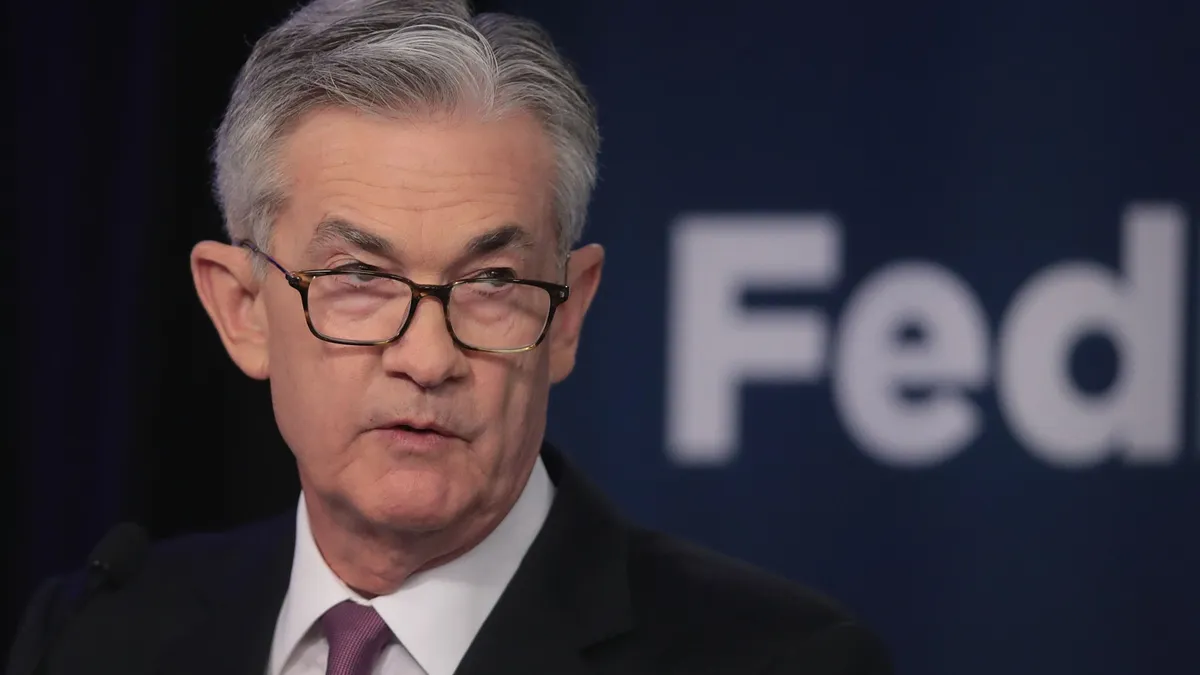Dive Brief:
- The Federal Reserve, noting that inflation “remains elevated,” held the main interest rate Wednesday at a 22-year high while signaling deeper cuts to borrowing costs next year than it forecast three months ago.
- The central bank will likely trim the federal funds rate by the end of 2024 to 4.6% from the current range between 5.25% and 5.5%, according to a median projection by Fed officials. In September, Fed officials estimated that they would reduce the main rate to 5.1% by the end of next year. Fed Chair Jerome Powell said as recently as Dec. 1 that it was too early to conclude policy was tight enough to warrant a rate reduction.
- The Fed’s preferred inflation gauge – the core personal consumption expenditures price index – will probably fall by the end of 2024 to 2.4% from a 3.5% annual rate in October, according to Fed officials’ median projection. They forecast that unemployment will likely rise to 4.1% at the end of next year from 3.7% in November.
Dive Insight:
Fed officials believe more rate hikes will probably not be needed in coming months but want to retain the option of further tightening in case inflation stops falling toward their 2% target, Powell said after a two-day meeting of the Federal Open Market Committee.
“The lower inflation readings over the past several months are welcome but we will need to see further evidence to build confidence that inflation is moving down sustainably toward our goal,” he said at a press conference.
“Inflation is still too high, ongoing progress and bringing it down is not assured and the path forward is uncertain,” Powell said. “While [FOMC] participants do not view it as likely to be appropriate to raise interest rates further, neither do they want to take the possibility off the table.”
The Fed, after pushing up the main rate from near zero beginning in March 2022, has made gains this year in cooling the labor market, curbing inflation and slowing economic growth.
Employers added 199,000 jobs last month, a slower pace than earlier in the year and comparable to the pre-pandemic hiring rate, the Labor Department said Friday. Unemployment fell in November to 3.7% from 3.9% in October but remained well above the 3.4% jobless rate in April.
“The labor market remains tight, but supply and demand conditions continue to come into better balance,” Powell said. During the past three months average job gains have fallen to 204,000, less than in early 2023, he added.
Price pressures have eased, albeit unevenly from month to month. The consumer price index excluding volatile food and energy prices rose 0.3% in November compared with 0.2% in October, the Labor Department said Tuesday.
The core CPI index in November increased 4% on an annual basis for the second straight month, or twice the central bank’s inflation target. Still, core CPI on an annualized basis was 2.9% in the six months through November compared with 5.1% during the prior six months.
“Inflation has eased from its highs and this has come without a significant increase in unemployment,” Powell said. “That’s very good news.”
Core PCE will probably fall to 2.2% in 2025 before hitting the Fed’s 2% target in 2026, according to the median projection by Fed officials.
The economy has started to cool this quarter after exceeding expectations by both Fed and private sector economists.
Output boomed at a 5.2% annual growth rate during the third quarter, fueled by an unexpected surge in consumer spending. Central bank officials expect gross domestic product to increase 2.6% this year, or 0.5 percentage point more than their September forecast.
A pullback in business investment and consumer outlays will probably rein in gross domestic product growth to 1.2% this quarter on an annual basis, according to an estimate by the Atlanta Fed.
“Recent indicators suggest that growth of economic activity has slowed substantially from the outsized pace seen in the third quarter,” Powell said.
“We see good evidence and good reason to believe that growth will come in lower next year,” Powell said, noting that “the full effects of our tightening cycle have not yet been felt.”
Fed officials expect GDP to rise 1.4% next year, 1.8% in 2025 and 1.9% in 2026, according to the median of their projections.
Powell echoed comments by Treasury Secretary Janet Yellen on Tuesday that the Fed can navigate the economy to a “soft landing,” tightening monetary policy enough to curb inflation but not so much that it triggers a recession or causes widespread unemployment. Yellen served as Fed chair from 2014 to 2018.
“I have always felt since the beginning that there was a possibility, because of the unusual situation [of the pandemic], that the economy could cool off in a way that enabled inflation to come down without the kind of large job losses that have often been associated with high inflation and tightening cycles,” Powell said.
“So far, that's what we're seeing,” he said, adding “it is far too early to declare victory.”
Editor’s note: The story was updated with comments from Powell’s news conference.













